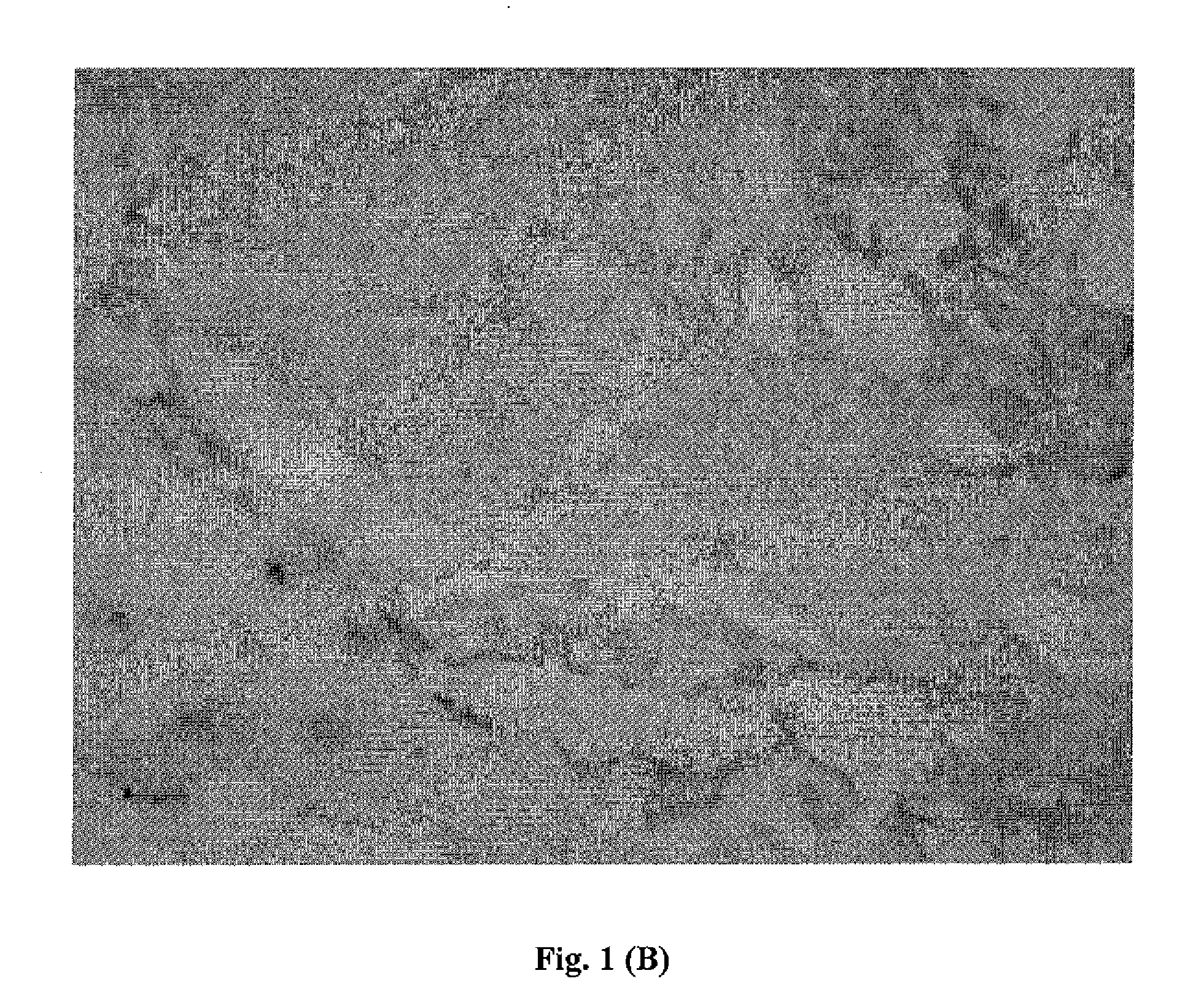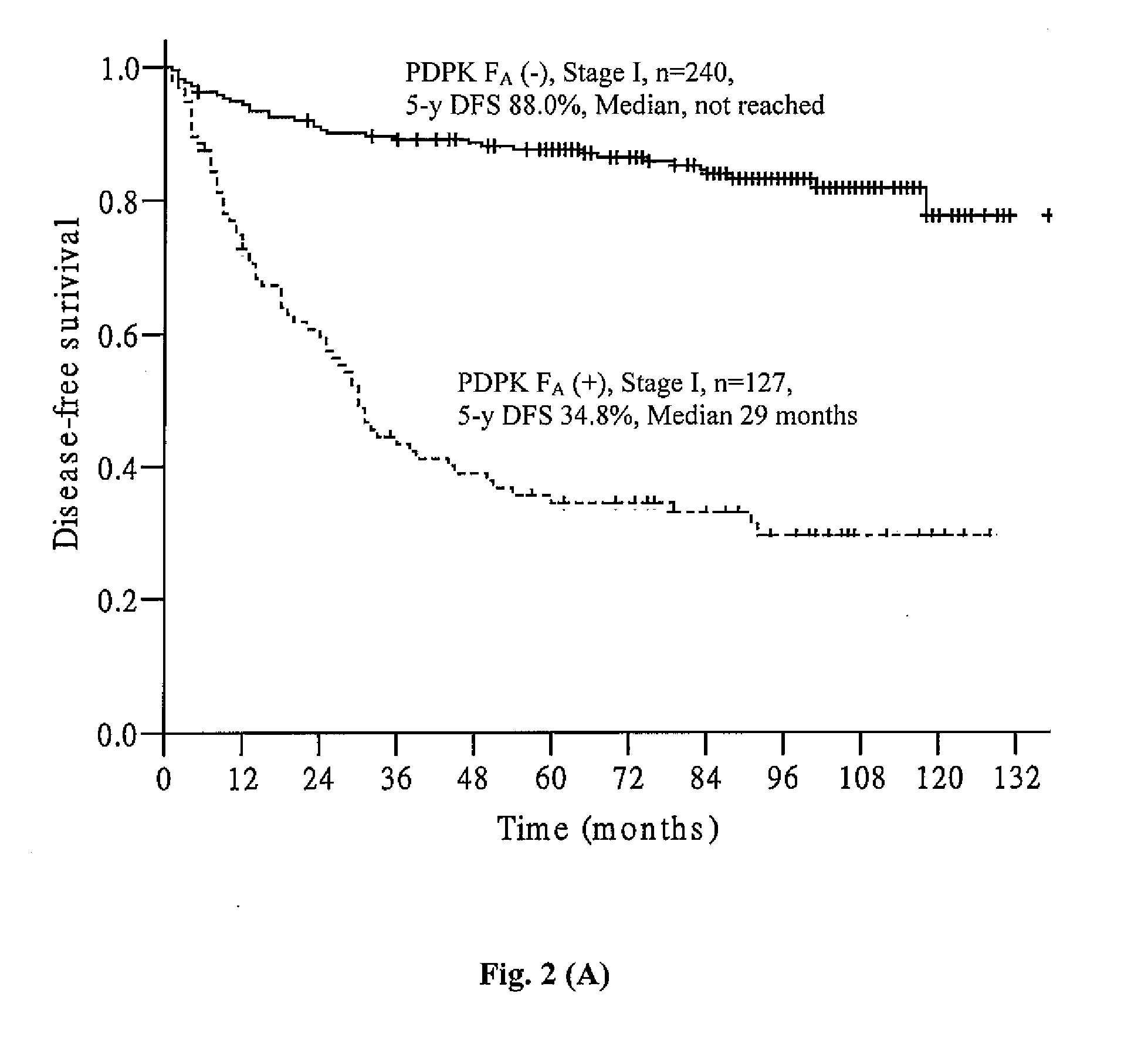Detection of Unhealthy Cell and Uses Thereof
a technology of unhealthy cells and expression of which is applied in the field of identifying and detecting unhealthy cells, can solve the problems of not being able to develop universally applicable molecule expression in cells for determining the risk of developing a disease beyond curable, and the systemic role of this signaling molecule particularly in bone marrow-derived cells remains largely unknown
- Summary
- Abstract
- Description
- Claims
- Application Information
AI Technical Summary
Benefits of technology
Problems solved by technology
Method used
Image
Examples
example i
Aberrant Expressions of PDPK FA / GSK-3α in Bone Marrow-Derived Cells
[0041]To establish the systemic role of PDPK FA / GSK-3α in bone marrow-derived cell (BMDC), an independent cohort study on bone marrow of 24 leukemia patients was performed. Aberrant expressions of PDPK FA / GSK-3α could be frequently detected in BMDC of leukemia patients with progressive diseases. In a cohort study of 24 cases, 14 cases were negative and 10 cases were found to be associated with aberrant expressions of PDPK FA / GSK-3α. The immunophenotyping analysis with CD34 (BD Pharmingen, clone 581 / CD34 specifically reactive with the class III CD34 epitope for the specific recognition of human hematopoietic stem / progenitor cells) further revealed that a rare population of CD34+ hematopoietic stem / progenitor cells, and CD34− mesenchymal stem / progenitor cells (Moioli et al, PLoS ONE, 2008, 3:e3922) associated with very strong expressions (>3+) of PDPK FA / GSK-3α and their derivatives associated with moderate to strong e...
example ii
Aberrant Expressions of PDPK FA / GSK-3α in the Stromas of Various Types of Incurable Stage I Tumors
[0042]In this embodiment, the stroma tissue specimens used for immunohistochemical analysis were obtained through a detailed retrospective review of the medical records of 367 patients with very early stage I tumors who had treatments at National Taiwan University Hospital, Taipei, Taiwan, between 1987 and 2004. Table 1 shows the stroma tissue locations, age, gender, status of survival and PDPK FA / GSK-3α. Patients were observed until April 2006.
TABLE 1Patients CharacteristicsCharacteristicsCase numberPercentage (%)Origin of stroma tissueBreast174.6locationBile duct5815.8Colorectum92.5Cervix184.9Esophagus71.9Stomach4512.3Liver143.8Lung6918.8Oral cavity30.8Ovary308.2Pancreas4211.4Prostate82.2Kidney4712.8GenderMale180Female187AgeRange (years)21-89Mean ± SD58.8 ± 12.7StatusAlive27073.6Death9726.4PDPK FA / GSK-3α statusNegative24065.4Positive12734.6
[0043]The aberrant expressions of PDPK FA / GSK...
example iii
Aberrant Expressions of PDPK FA / GSK-3α in Inflammatory Fibrotic Tissues
[0044]In accordance with the notion as established above, the aberrant expressions of PDPK FA / GSK-3α indeed could be frequently detected in inflammatory fibrotic tissues. In an independent cohort study of 35 squamous hyperplastic tissues, comprising 26 cases without fibrosis and 9 cases with fibrosis, aberrant expression of PDPK FA / GSK-3α in BMDC as shown in FIGS. 1 and 3 were detected predominantly in hyperplastic tissues with fibrosis; 7 of 9 were found to be positive with PDPK FA / GSK-3α. Conversely, 18 of 26 cases of fibrosis-negative tissues were found to be PDPK FA / GSK-3α-negative (Chi-square test, P=0.022). Immunophenotyping analysis with CD34, CD68, vimentin and α-SMA further revealed that a rare population of CD34+ / vimentin− hematopoietic stem / progenitor cells, CD34+ / vimentin+ fibrocytes and CD34− / vimentin+ mesenchymal stem / progenitor cells associated with very strong expression (>3+) of PDPK FA / GSK-3α al...
PUM
 Login to View More
Login to View More Abstract
Description
Claims
Application Information
 Login to View More
Login to View More - R&D
- Intellectual Property
- Life Sciences
- Materials
- Tech Scout
- Unparalleled Data Quality
- Higher Quality Content
- 60% Fewer Hallucinations
Browse by: Latest US Patents, China's latest patents, Technical Efficacy Thesaurus, Application Domain, Technology Topic, Popular Technical Reports.
© 2025 PatSnap. All rights reserved.Legal|Privacy policy|Modern Slavery Act Transparency Statement|Sitemap|About US| Contact US: help@patsnap.com



